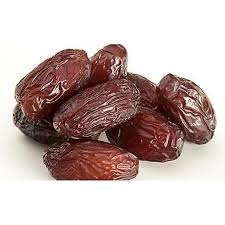
Kurma Majol in Traditional Malay Weddings
The Essence of Kurma Majol in Traditional Malay Weddings
Kurma Majol holds a special place in the customs and traditions of traditional Malay weddings. These dates are not only cherished for their delectable taste but are also rich in symbolic meaning, signifying the love, blessings, and unity of the couple embarking on their journey of marriage.
Symbolism and Rituals
1. Blessings and Good Fortune
In Malay culture, offering Majol Dates during a wedding symbolizes the bestowing of blessings and good fortune upon the couple. It is believed that the sweetness of dates represents the sweetness of the marriage and the fruitful life they will lead together.
2. Unity and Harmony
The act of sharing Majol Dates with family and guests during the wedding ceremony signifies the unity and harmony of the couple’s families coming together. It represents the merging of two families and the creation of a strong bond between them.
3. Hospitality and Generosity
In Malay weddings, hospitality and generosity are highly valued. Offering Kurma Majol to guests reflects the couple’s desire to provide a warm and welcoming atmosphere. It is a gesture of appreciation for the presence and well-wishes of the guests, ensuring they feel honored and cherished.
Customs and Practices
1. The Bersanding Ceremony
During the Bersanding ceremony, the newlywed couple sits on a dais as guests approach to offer their congratulations. Kurma Majol is often placed on a tray alongside other symbolic items and presented to the couple, signifying the blessings and good wishes being bestowed upon them.
2. The Exchange of Gifts
In traditional Malay weddings, the exchange of gifts between the families of the bride and groom is an important ritual. Majol Dates are often included as part of the gift exchange, symbolizing the sharing of blessings, love, and happiness between the two families.
3. Wedding Favors
Kurma Majol is frequently used as a wedding favor, given to guests as a token of appreciation for their presence and well-wishes. It serves as a reminder of the couple’s love and gratitude and is a sweet memento that guests can take home to enjoy.
Other fruits or symbols that hold significance in traditional Malay weddings:
In addition to Majol Dates, there are several other fruits and symbols that hold significance in traditional Malay weddings. Here are some of them:
1. Betel Leaves and Areca Nuts: Betel leaves and areca nuts are often presented together as a symbol of unity, harmony, and mutual respect between the bride and groom’s families. They are exchanged during the engagement ceremony and are also placed on the wedding dais.
2. Coconut: The coconut is considered a symbol of purity, fertility, and a blessed union. It is often used in traditional Malay wedding ceremonies, such as the “merenjis” ritual, where the couple’s hands are washed with water from a coconut.
3. Pineapple: The pineapple represents prosperity, good fortune, and hospitality. It is commonly used as a decorative element in Malay weddings, and pineapple-based dishes or desserts may be served to guests as a symbol of abundance.
4. Banana: Bananas are associated with fertility and represent the hope for a fruitful marriage. They may be included in the ceremonial tray of gifts exchanged between the bride and groom’s families.
5. Jasmine Flowers: Jasmine flowers, known as “bunga melur” or “bunga cempaka,” are highly valued in Malay culture. They symbolize purity, beauty, and grace. Jasmine flowers are often used in bridal bouquets, hair adornments, and as decorative elements in the wedding venue.
6. Traditional Malay Motifs: Various traditional Malay motifs, such as the “bunga telur” (egg-shaped floral ornament) and “bunga rampai” (potpourri), are used as decorative elements during Malay weddings. These motifs symbolize fertility, harmony, and joy.
7. Gold and Jewelry: Gold and jewelry hold significant value in Malay weddings. They symbolize wealth, prosperity, and the commitment between the bride and groom. The exchange of gold jewelry during the wedding ceremony represents the groom’s responsibility to provide for the bride’s well-being.
8. Traditional Malay Attire: The traditional Malay attire, such as the “Baju Melayu” for men and “Baju Kurung” or “Kebaya” for women, is an important symbol of cultural identity and heritage. Wearing these traditional garments during the wedding ceremony reflects the couple’s respect for their cultural roots.
These fruits and symbols play a meaningful role in traditional Malay weddings, representing various aspects of love, unity, prosperity, and cultural traditions. They add depth and symbolism to the wedding rituals, creating a rich and vibrant celebration of Malay heritage.
Conclusion
Kurma Majol, with its profound symbolism and cultural significance, plays an integral role in traditional Malay weddings. It represents the blessings, love, and unity shared by the couple and their families. From the exchange of gifts to the offering of hospitality, dates are a timeless symbol of love and well-wishes. Embrace the rich traditions and customs surrounding Majol Dates, and infuse your wedding with the sweetness and blessings it brings.